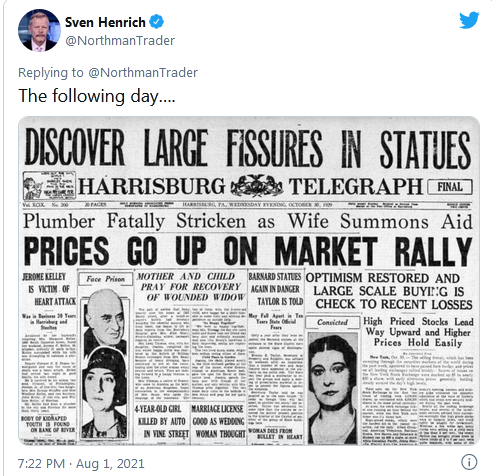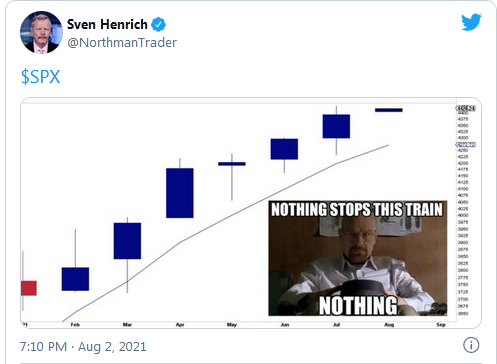Technology has evolved exponentially in the last 100 years and in this sense we live in extraordinary times. We all are participants in this amazing journey that requires us to adapt constantly using new products and services all the time, especially in the last 30 years. Those of us that have been alive during this journey can likely rattle off a litany of products and services we learned to use along the way only to find them outdated and no longer used a few years later. Learning to program in Fortran? What a waste of time. You could speed type on your BlackBarry? Congrats. Got a big tape, CD, and VHS collection? All pretty much useless today. You all can think of many more examples.
No, the changes that have come, especially now in the age of digital technologies and social media have been fast and furious, unfolding right in front of our eyes. Boomers are now zooming into crypto after all.
And all this happened in just a 100 years. Heck, the first radio news program just went on the air on Aug. 31, 1920 in Chicago. For thousands of years nothing really changed fundamentally in how humans lived. Now all of a sudden massive and constant changes.
Why am I raising all this? Because, while technology has been changing rapidly, basic human behavior I propose has not. Yes we may all be going through subtle changes by suddenly being glued to screens for hours on end in one way or another, but the basic principles of our behavior hasn’t changed. While technological evolution may be progressing exponentially biological life forms do not which means we are still subject to the same follies of mania, greed and market cycles.
I was reminded of that this weekend when I posted a few headlines from 1929:
Contrast these headlines with March 2020:

The injection of ungodly liquidity of course producing the largest and fastest market cap expanding rally in history with nothing seemingly stopping this train:
Yet comparing the headlines from 1929 to now one could surmise that some things never change. Bankers ending crashes and massive rallies ensue.
So maybe, just maybe, larger cycles remain all the same despite the technology revolution. Hence I want to bring in the name Richard Wyckoff. Anyone well versed in technical analysis knows the name Wyckoff. One of the original giants in TA he was particularly interested in educating retail about the trappings of investing cycles.
Via Stockcharts: “Richard Demille Wyckoff (1873–1934) was an early 20th-century pioneer in the technical approach to studying the stock market. He is considered one of the five “titans” of technical analysis, along with Dow, Gann, Elliott and Merrill. At age 15, he took a job as a stock runner for a New York brokerage. Afterwards, while still in his 20s, he became the head of his own firm. He also founded and, for nearly two decades wrote, and edited The Magazine of Wall Street, which, at one point, had more than 200,000 subscribers. Wyckoff was an avid student of the markets, as well as an active tape reader and trader. He observed the market activities and campaigns of the legendary stock operators of his time, including JP Morgan and Jesse Livermore. From his observations and interviews with those big-time traders, Wyckoff codified the best practices of Livermore and others into laws, principles and techniques of trading methodology, money management and mental discipline.
From his position, Mr. Wyckoff observed numerous retail investors being repeatedly fleeced. Consequently, he dedicated himself to instructing the public about “the real rules of the game” as played by the large interests, or “smart money.” In the 1930s, he founded a school which would later become the Stock Market Institute. The school’s central offering was a course that integrated the concepts that Wyckoff had learned about how to identify large operators’ accumulation and distribution of stock with how to take positions in harmony with these big players. His time-tested insights are as valid today as they were when first articulated.”
One of his big developments became known as the Wyckoff Market Cycle showing a distinct pattern of accumulation, mark up, then distribution before an aggressive markdown:

I must confess I’ve never incorporated Wyckoff’s market cycle pattern into my own analysis, but over recent weeks it started to occur to me that many charts may actually be following this pattern to the letter.
My first inkling was that of small caps which have been in a massive chop range for 6 months now:

This following of course the insane rally we saw off the March 2020 lows:

But that doesn’t seem to quite follow the classic Wyckoff pattern, but the consolidation is notable.
Then Amazon (NASDAQ:AMZN) reported last week and the stock dropped following making marginal new highs:
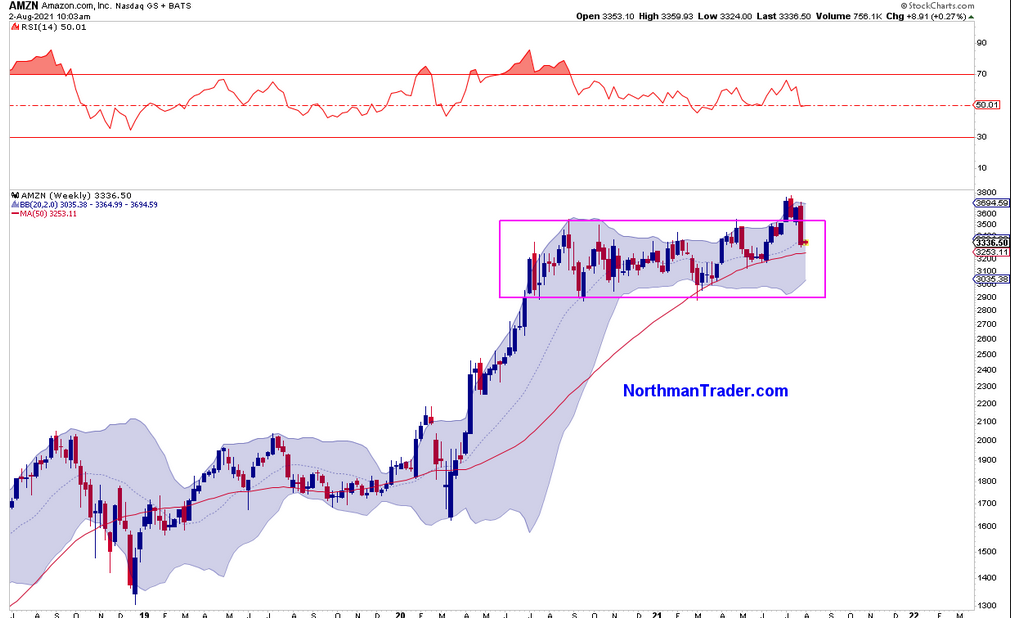
That had me curious for the Wyckoff pattern allows for a fake out high during the distribution phase.
Indeed, and I’m not pretending to make this a dot for dot exercise here, but if I overlay the basic Wyckoff pattern to AMZN I get this:
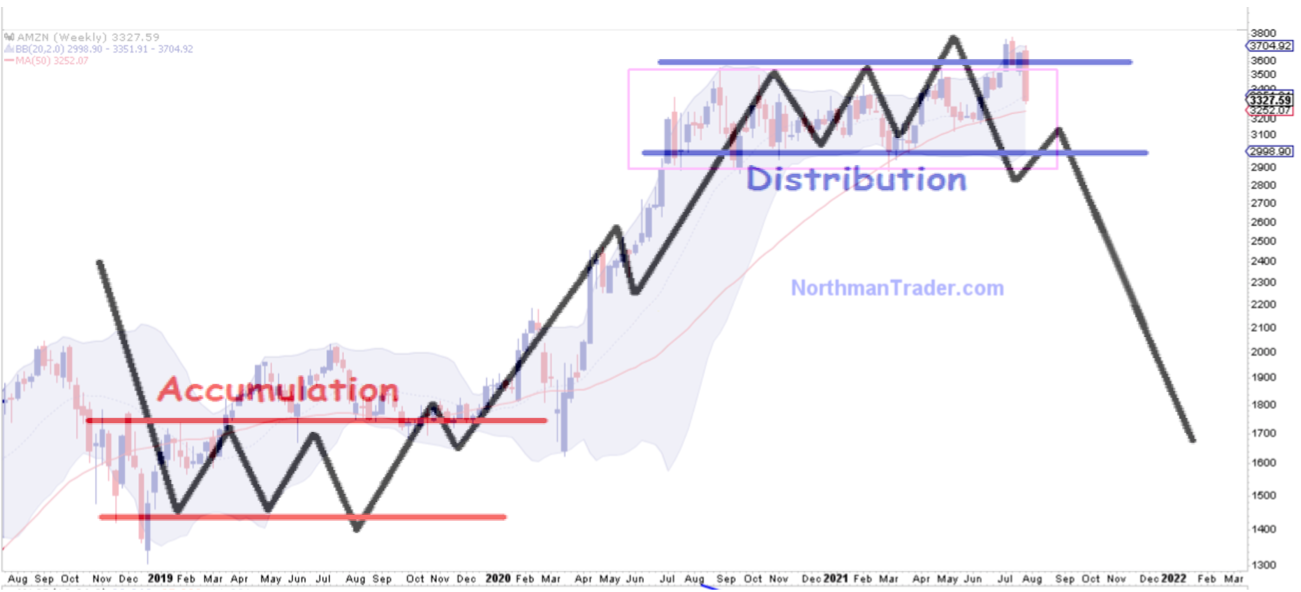
Go figure. Kinda all fits. The proof of course outstanding which would involve a break of the distribution range and then a bounce rally back into it before failing.
Now this is where the plot thickens. As many of you hopefully know I’ve been trying to track Bitcoin technically as objectively as possible in recent months in this latest thread since June 1 (click the tweet to see the evolution of the thread from June 1 to now):
In recent weeks I also had an extensive and frank conversation with Michael Saylor on the subject of Bitcoin:
I trust everyone having watched this knows me not to be a Bitcoin hater, rather someone trying to evaluate our current asset price equation.
One of the issues I raised with Michael referencing an article I wrote earlier in the year was the hedge concept as all asset classes have been rising in our liquidity soaked environment. How would Bitcoin act as a hedge in a real market drawdown, something we haven’t seen since March 2020.
As it turns out Bitcoin peaked in April, dropped over 50% while the main indices kept rallying, so for this period it wasn’t a good hedge. But Bitcoin has led the market before in terms of peaking.
Specifically in 2017 before markets topped in 2018, and then again in 2019 before markets peaked in 2020:
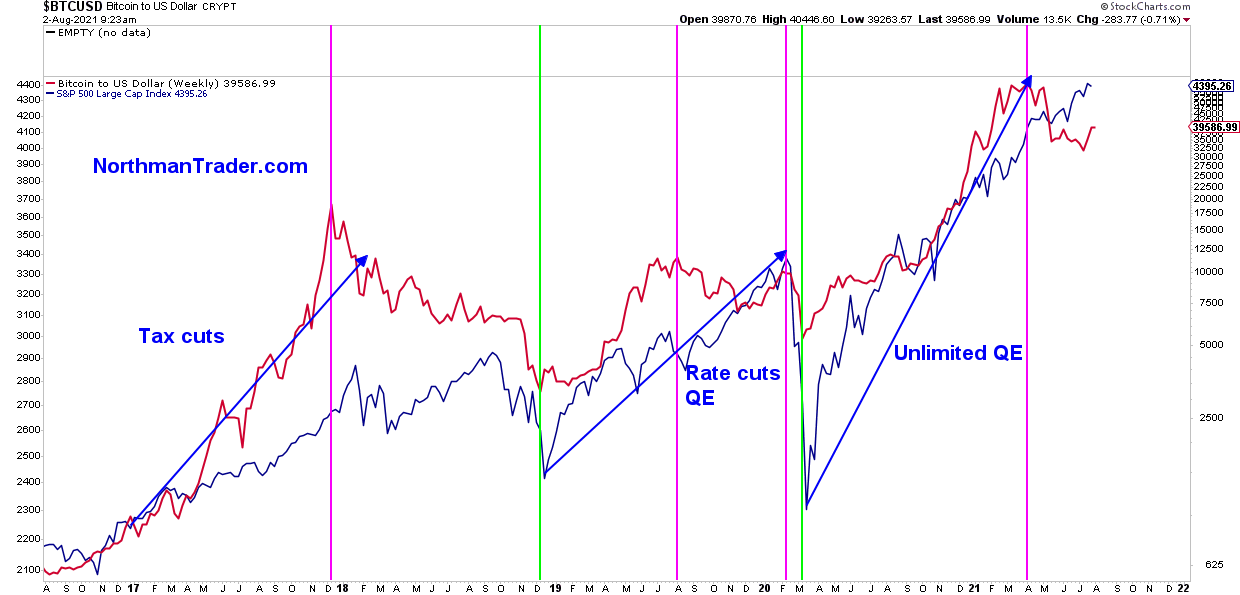
During the first case it was a one month lag, in the second it was 7 months. Not a big sample size, but nevertheless that’s what happened.
Hence I wonder if crypto could be the lead indicator here, especially in context of the Wyckoff pattern. Why? Because if crypto is leading, then the unconfirmed move in AMZN may already seen as confirmed in Bitcoin.
Here’s Wyckoff overlaid on BTC:
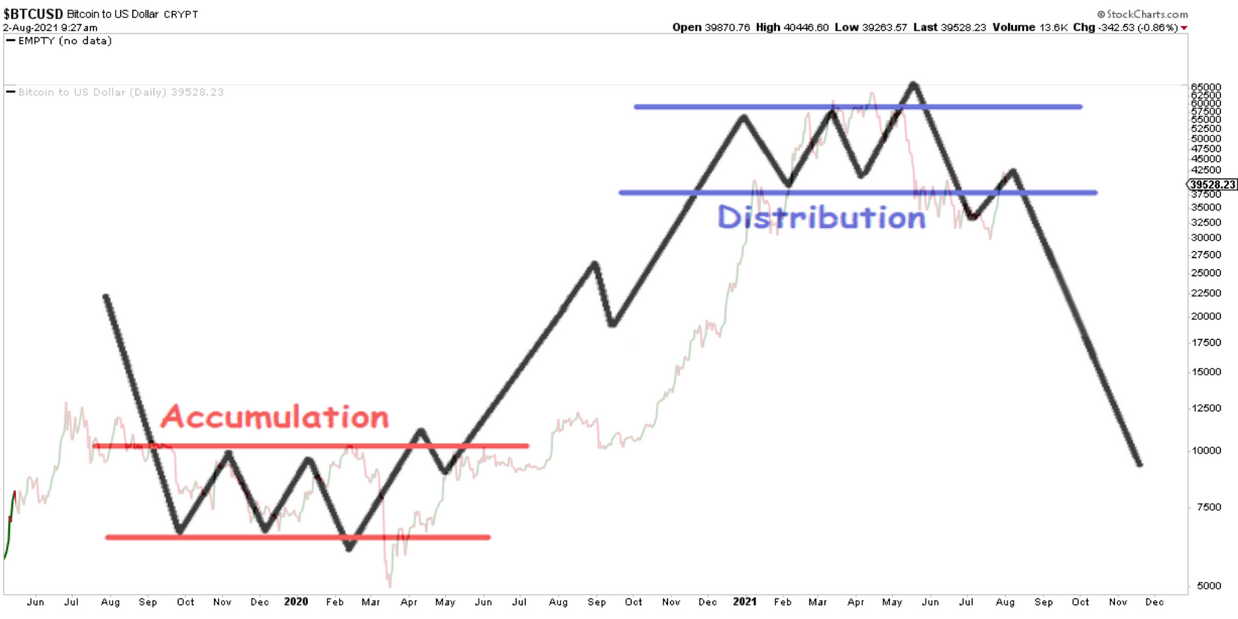
Which could imply that the recent rally in Bitcoin is just the backtest of the distribution pattern before the real markdown.
Now I’m the first to admit that this thesis is all conjecture at this point (especially since my wife has a $100K target in Bitcoin), but I’m intrigued about the possibility in terms of the entire market structure, not just Bitcoin.
Let’s not forget the valuation context with market valuations more disconnected from the size of the economy than ever before:

A period of mark down per the Wyckoff pattern makes all the sense in the word historically speaking especially.
So yea, maybe, just maybe, Bitcoin is indeed foretelling the future and not in the way most people expect.
I can’t say, I just find it fascinating that I see the Wyckoff structure everywhere. And we know retail has been piling into these markets like never before in history. And somebody keeps selling to retail on every gap up as evidenced by NYAD:
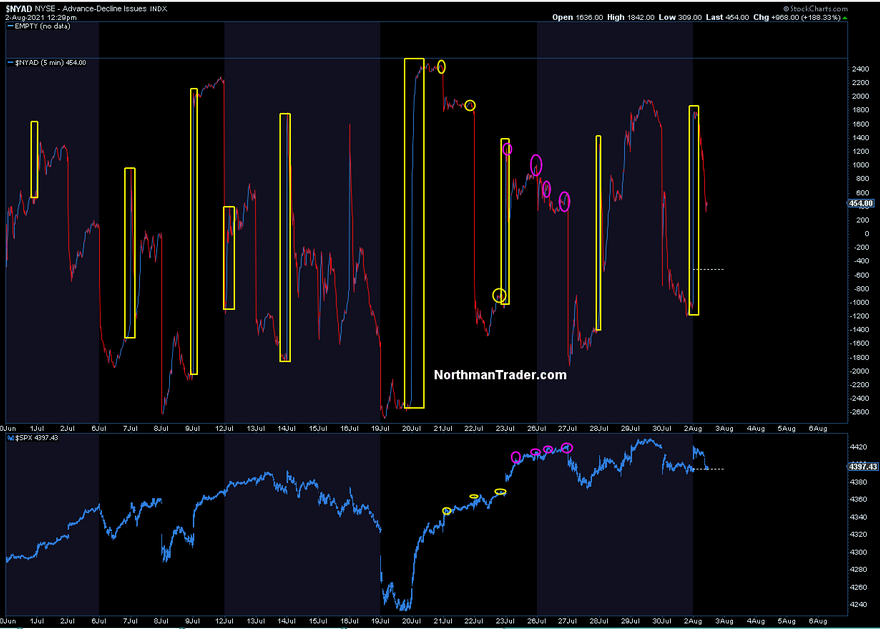
Wyckoff, if he were alive today, may call that distribution in which case a period of markdown is coming and eager retail buyers may find themselves to be bag holders. We’ll see. For now the never ending rally continues on its merry path as does the Fed’s balance sheet expansion. Time will tell if the market has a Wyckoff problem.


